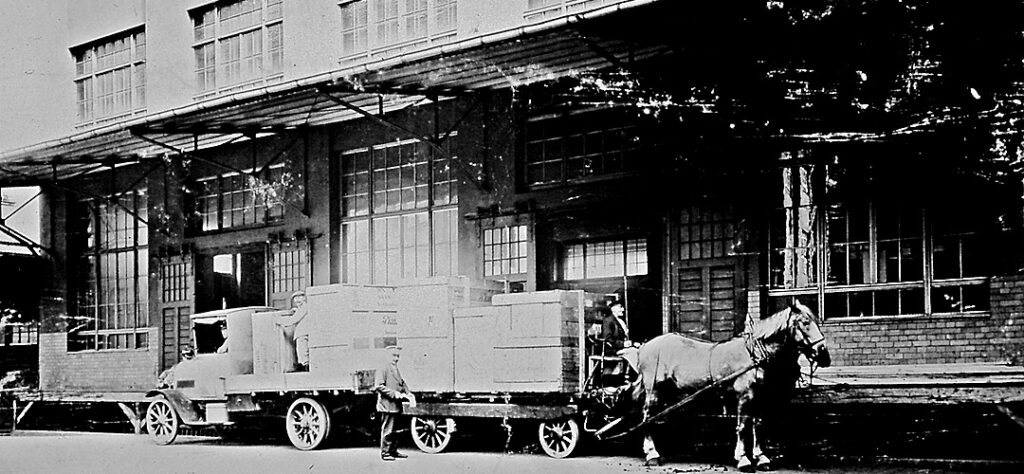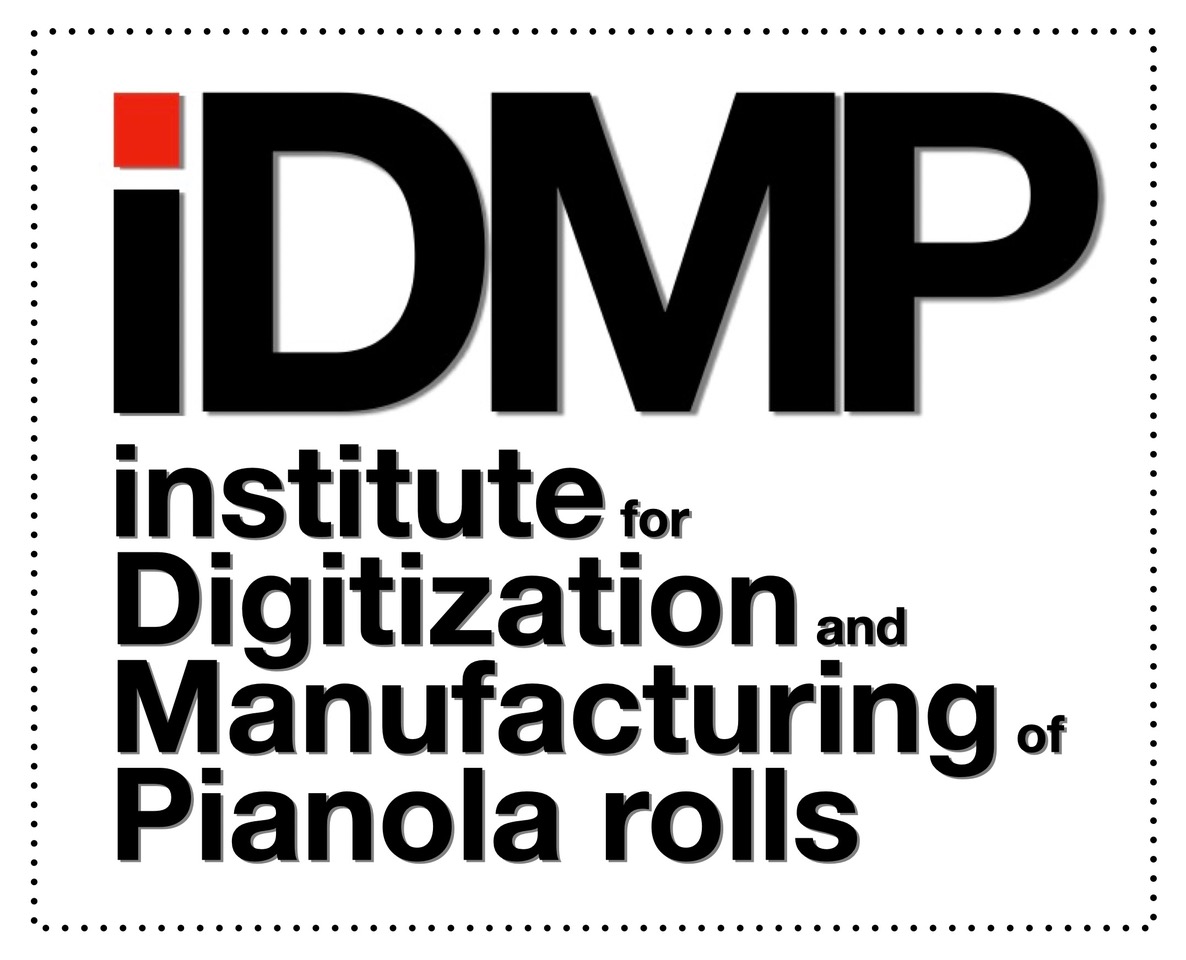STILL EXISTENT INSTRUMENTS
The heyday of the development of reproducing instruments from ~1905-1930 was ~100 years ago, one/two world wars and several economic and trend crises. For very different reasons, the vast majority of instruments and music rolls no longer exist today. Today there is no comprehensive overview of how many of the reproduction instruments are still preserved.

LIST OF PRESERVED REPRODUCING INSTRUMENTS
The heyday of the development of reproducing instruments from ~1905-1930 was ~100 years ago, one/two world wars and several economic and trend crises. For very different reasons, the vast majority of instruments and music rolls no longer exist today. Today there is no comprehensive overview of how many of the reproduction instruments are still preserved.
In a continuous "research and study work" an attempt will be made to record at least the majority of the instruments distributed worldwide [Welte red, Welte green, Hupfeld Phonola, Hupfeld Clavitist, Hupfeld Phonoliszt, Hupfeld DEA and Hupfeld Duo/Tri-Phonola, Aeolian DUO-ART (only in combination with Steinway), Philipps DUCA/Pianella as well as Ampico A and Ampico B and Welte Licencee instruments] in a list.
You can request the current status of the list from us. I would be very grateful for any additions, tips and suggestions regarding this research work! At this page you will find information on how to find the often hidden serial numbers on your instrument.
The main reasons for the drastic reduction in reproductive instruments are briefly described here.
Most of the instruments were probably destroyed during the world wars. Even in the difficult period immediately afterwards, many of the instruments that had not yet been destroyed were destroyed by the weather, demolished, burnt as a source of wood, dismantled for lack of function or simply thrown away. In the USA, however, Ampico, Duo-Art and Welte-Lic instruments were not affected.
The economic hardship in the 1920s - but above all the change in musical trends away from the piano and towards radio and records and the shift from luxury investments to cars or other publicly visible status symbols - triggered a mass sale of second-hand instruments to dealers and others at rock-bottom prices. Their warehouses were full and they tried to find buyers. However, this was often no longer possible, so that more instruments disappeared in the bankruptcy estates of many dealers around 1929.
After around 20-30 years of intensive or even non-use, technical problems arose with the reproduction instruments, which was often a further trigger for these instruments to either be sold, stored, freed from the self-playing technique or simply disposed of. This was the last major wave of inventory reduction. The instruments that were then still in existence were consigned to the depots of museums, collectors and dealers. Today, it is very rare to find reproduction instruments that emerge from original ownership.
INITIAL FINDINGS FROM THE SERIAL NUMBER ANALYSIS
Unfortunately, exact production figures and continuous lists of serial numbers of individual manufacturers such as Welte or Hupfeld have not been provided or have not been discovered to date, so that it is no longer possible to establish a clear link between instruments produced and instruments received. However, lists of serial numbers have been preserved for most piano manufacturers, so that it is possible to determine the year of manufacture of pianos, grand pianos and cabinets. This can also be used to classify the serial numbers on the pneumatics. One specific source is the sales figures of the largest suppliers of Welte, Philipps and Hupfeld - namely Feurich, Steinway & Sons, Bechstein, Ibach and others.
Even if not all instruments have been recorded to date, many reproduction instruments have now been localised. A first look at the distribution (geographical, ownership, construction, type, etc.) arouses curiosity. Data collection in Germany is initially easier, so it is easy to explain why just under 50% of the Welte instruments recorded are currently to be found in Germany. Nevertheless, this may also tend to correspond to the marketing at the time. Of the Welte instruments recorded to date, just over 30% are to be found in museums, the others in collectors' and private ownership. Once all the museum depots have been searched, this figure is likely to increase. Of the Welte instruments recorded to date, just over 25% are uprights, less than 10% are cabinets, around 30% are upright pianos and just over 30% are grand pianos. It is not surprising to see that almost 80% of the Welte instruments recorded to date are equipped with the Welte red (T100) system, as Welte did not sell such large numbers after its introduction in 1924.
It is noticeable that some pneumatic numbers dance out of sequence, and yet a continuously increasing sequence of numbers can be recognised. Individual shifted numbers can be traced back to the production process at the time, as piano acoustics and pneumatics were sometimes brought forward by the respective manufacturers or parked in the production process and used again later.
It is important to know that piano manufacturers such as Feurich or Steinway assigned the serial number for the piano quite early in the production process - usually at the so-called "marriage", i.e. the joining of the frame and the frame moulding. After completion of the piano, or the frame in the case of cabinet fittings, the instrument was sent to Welte in Freiburg. The Welte mechanism was then installed there, the case number stamped on and the finished instrument put on sale. This means that there may well be a difference of 1-2 years between the piano manufacturer's serial number and the Welte serial number. As an example: The Steinway-Welte piano No 151767 was built in 1911 according to the Steinway piano serial number, but was only delivered by Steinway & Sons to Freiburg on 11 March 1912. Depending on when it was equipped with Welte technology and received the Welte case number, this could have been at the end of 1912 or even at the beginning of 1913. In 1912, over 90 Steinway pianos were sent to Freiburg, which were in the production process for different lengths of time in different designs and styles, so that it is easy to understand that there are always irregularities in the serial number sequence during the production process.
SERIAL NUMBER ANALYSIS: WELTE
In addition to the first impressions regarding the distribution of the instruments, some hypotheses and findings can already be derived from the serial number sequences. The oldest Welte instrument identified in detail to date is a Feurich-Welte cabinet with the Feurich serial number 18686 and the Welte serial number 1322 from 1906. The article by Hans-W. Schmitz on "Die Stückzahlen der Welte Instrumente" mentions a cabinet with the case number 640 - which must therefore have been built much earlier. The highest Welte serial number found to date is 7216 on a Blüthner-Welte grand piano with the serial number 114669 from 1930. Unfortunately, Welte uprights cannot be dated via a piano serial number due to the lack of a piano interior - the serial number in front of the wind motor appears to be a separate number for the uprights.
The case number on the back of the Welte-Mignon cabinets, uprights, pianos and grand pianos appears to be the consecutive Welte serial number. In fact, it seems that Welte started counting the orchestrions and continued with Welte-Mignon cabinets, etc. In the article "Welte Orchestrion - Years of Plenty" by Durward R. Center, this assumption is already made and some Welte orchestrion serial numbers with production dates (from handwritten information in the respective instrument) are listed:
Serial number: 57 (year of manufacture 1893)
Serial number: 659 (year of manufacture 1905)
Serial number: 2816 (year of manufacture 1910)
Compared with, for example, the Welte-Mignon Kabinett serial numbers from our list, whose years of manufacture can be clearly determined by the piano manufacturer's serial number, these orchestrion serial numbers make sense:
Case serial number of the Feurich-Welte Kabinett: 1322 (year of manufacture of the Feurich Raste 1906, delivery of the Feurich Raste with tuning keyboard on 10 May 1906 for 315 marks)
Case serial number of the Feurich-Welte cabinet: 2821 (year of manufacture of the Feurich Raste 1909)
Case serial number of the Steinway-Welte Kabinett: 3718 (year of manufacture of the Steinway Raste 1912, delivered by S&S to Freiburg on 4 December 1912)
The examples of the identified Welte-Mignon Vorsetzer case serial numbers are also consistent with the serial number sequence. The Vorsetzer with the case number 1941 on the back (wooden sliding block, no serial number on the wind motor) could therefore be dated to around 1908, i.e. the year in which pianos with built-in and Vorsetzer were launched on the market by Welte. It remains to be investigated whether the Welte Philharmonie organs also had such a Welte case number.
Assuming that Welte numbered the instruments consecutively with the case number, it would be possible to date each Welte-Mignon instrument quite clearly. The more complete the list of surviving Welte-Mignon instruments becomes, the more precise the dating.
It will be interesting to narrow down more precisely how many Welte-Mignon instruments were made in total. Hans-W. Schmitz has presented a good derivation of ~4200 manufactured Welte-Mignon instruments in his analysis. If the Welte case serial number 7216 previously named for the Blüthner grand piano is one of the last - and depending on how many orchestrions (possibly organs) were built (assumption ~1500) - the number of Welte-Mignon instruments made could also have been 5000-6000. This supports the analysis of the Feurich sales books that we have begun, as it appears that considerably more instruments were delivered to Welte than previously assumed. The same applies to the deliveries from Ibach to Welte. As soon as new findings have been obtained, these will be presented here together with the resulting hypotheses.
SERIAL NUMBER ANALYSIS: HUPFELD
A large number of Hupfeld DEA, Phonola, Duo- and Triphonola pianos were fitted with these systems. The serial numbers of the pianos/grands can be used to categorise them over time. Here, too, the Hupfeld machine numbers are arranged in an ascending series with numerous shifts, so that a systematic numbering system can also be assumed here. As with Welte, it is reasonable to assume that this apparatus number is also consistent in the case of the front setters. According to the current state of research, this would mean that the Vorsetzer with the serial number 2168 is the lowest apparatus number - and the number 55832 on a Phonola (88) piano is the highest Hupfeld number.
What is striking here compared to Welte is the considerably lower number of DEA, Duo and Triphonola reproduction instruments. Although it is certain that fewer instruments were obtained by private individuals, collectors and museums over the course of time due to the lower popularity of these instruments compared to Welte-Mignon, it can also be deduced that considerably fewer Hupfeld reproduction instruments were sold. Hupfeld's market success was mainly due to the phonola, the clavitist and the orchestrions. Even if Hupfeld built 1000 Phonolas and more per year in the peak period 1902-1913 according to its own advertising, the 5-digit production numbers later appear to be considerably too high - the assumption suggests itself that around 1915 the number 30000 was possibly used for upright and grand pianos, perhaps to create a reserve for the already high number of Phonola Vorsetzer. In any case, as the largest European factory for mechanical musical instruments, Hupfeld produced an incredibly high number of pieces. As soon as new hypotheses/knowledge are gained, these will also be presented here.
General note
We are grateful for voluntary donations in recognition and support of our great financial and time effort to provide such documents in our ‚resources' section - according to §60 c UrhG expressly without the intention of making a profit. If you would like to support this voluntarily, you can do so here. you can do so here..

